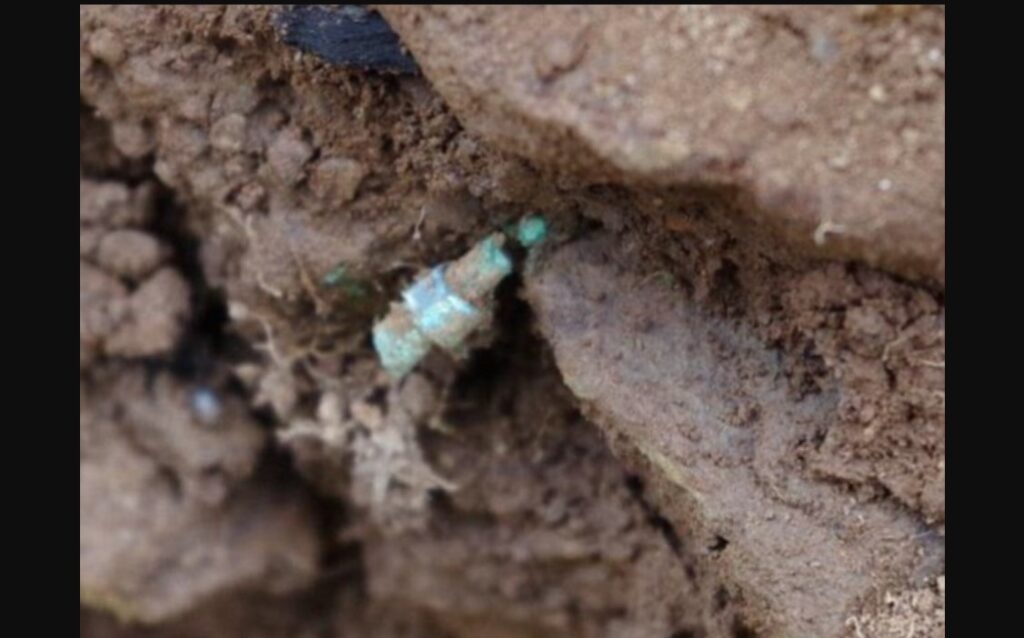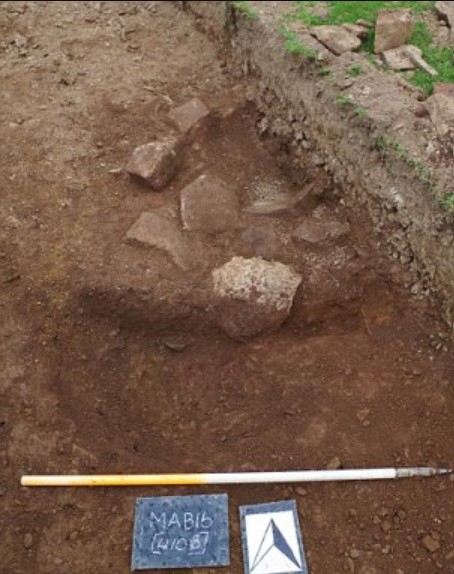‘Rare and significant’ brooch found at site linked to King Arthur
A copper brooch that could be up to 2000-years-old has been discovered close to a site linked to the legendary King Arthur.
The piece of jewellery is thought to date back to the Romano-British period while the country was under Roman rule.
Some reports have even suggested it could have even belonged to King Arthur’s wife Guinevere, but archaeologists say it is unlikely to have belonged to the queen.

It is thought the precious brooch was dropped by a wealthy noble woman as she walked through the area.
Archaeologists stumbled across the piece of jewellery that is understood to be the first physical proof that the area was home to the rich and powerful during the time during excavations.
The brooch was found in a field known as Chapelfield, where developers are seeking planning permission to build 14 houses.
According to a public report by Cornwall council, the brooch ‘is a rare and significant find, suggestive of a reasonably “well-healed” Romano-British farmstead settlement.’
The Romano-British period dates from the Roman conquest in AD 43 to when the Romans left in AD 410.
The brooch was discovered in St Mabyn, Cornwall, less than a mile from a hill fort which has previously been suggested might have been the site of King Arthur’s Camelot.
‘Its location within the upper fill of the eastern enclosure ditch suggests that the piece represents accidental loss, perhaps as a result of it having been broken in antiquity’ the report says.
But others do not agree the brooch is rare.
‘It is a penannular brooch dating from the Romano-British period,’ Andrew Young, from the Cornwall Archaeology Unit told MailOnline.
He said the conditions in which it was buried mean it will not have been well-preserved.
‘Such brooches are by no means unusual, although in Cornwall the acid soils mean that survival of metal objects such as this is rather patchy.’
The brooch was photographed while in the soil and sent to the Royal Cornwall Museum to be prepared and conserved.
‘Once it has been cleaned and conserved it will be photographed again,’ Mr Young told MailOnline.

Some reports had suggested the brooch might have belonged to the legendary King Arthur’s wife Guinevere, but Mr Young does not believe it could.
The facts around the real King Arthur are mired in myth and folklore, but historians believe he ruled Britain from the late 5th and early 6th centuries.
‘I should also point out that it is earlier than the legendary King Arthur by several hundred years,’ Mr Young said.
